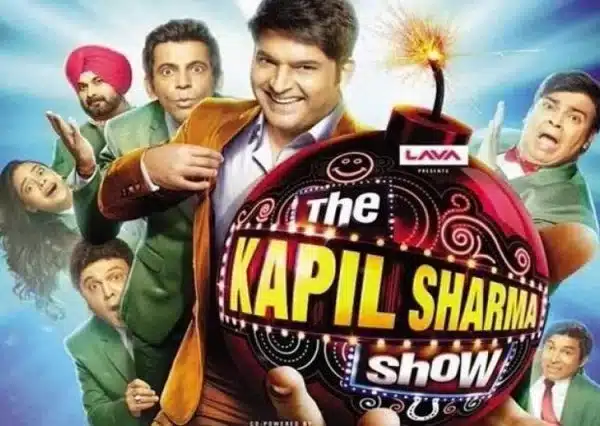Can leaders be funny?
That’s a question we don’t hear too often in boardrooms or leadership forums. But maybe we should.
In our experience facilitating leadership workshops across diverse industries, one pattern we’ve noticed is that the most effective leaders are those who can connect with people – not just through authority or expertise, but through authenticity. And nothing reflects authenticity quite like a sense of humor.
Which brings us to someone who isn’t a corporate leader in the traditional sense, but whose journey and leadership style are nothing short of inspiring – Kapil Sharma.
Whether you’re a fan of stand-up comedy or not, you’ve likely heard his name. He’s been a household presence in Indian entertainment for over a decade, known for his wit, relatability, and spontaneous energy. But behind the laughs is a story of perseverance, team-building, self-belief, and leadership – the kind of leadership that can teach us a thing or two about how to build high-performing teams and navigate change.
Comedy is Serious Business
Table of Contents
Let’s take a moment to acknowledge this: comedy is hard. It requires timing, presence, empathy, storytelling, creativity – all skills that translate beautifully into the world of leadership.
In fact, the ability to make people laugh is often rooted in the same emotional intelligence that drives effective leadership. Leaders who bring humor into the workplace can create psychological safety, reduce stress, foster creativity, and enhance team cohesion.
And Kapil Sharma, in many ways, is a masterclass in these soft (but vital) skills.
So what can corporate leaders learn from one of India’s most beloved comedians?
1. Building an Exceptional Team

If you’ve ever watched The Kapil Sharma Show, you know it’s not a one-man performance. The success of the show depends heavily on the chemistry between its cast – from Sunil Grover and Kiku Sharda to Krushna Abhishek and others who’ve taken the stage over the years.
“In our experience with corporate leadership teams, we’ve often seen leaders fall into the ‘solo performer’ trap. But real success – sustainable success – comes from surrounding yourself with a team that complements your strengths and covers your blind spots.”
Kapil’s show is a masterclass in ensemble performance. Each member brings their own energy and flair to the table. And Kapil, as the lead, knows when to step forward and when to step back – a hallmark of great leadership.
Compare this to legendary teams in the corporate world:
- The Walt Disney Studios team (Walt + Ub Iwerks + a crew of animators)
- The Ford Motor Company team (Henry Ford + Clarence Avery + Peter Martin)
- The leadership teams behind Apple, Pixar, or Infosys.
The lesson is clear: great leaders build great teams – and then let them shine.
Related Reading: Building High Performance Teams
2. Empowering Others Without Losing Control
Watch any episode of the show and you’ll see this: Kapil doesn’t hog the spotlight. He often lets other characters run the sketch while he plays the straight man or adds a witty line at just the right moment.
That’s trust in action.
“We’ve noticed in our leadership development workshops that many new managers struggle with delegation. The fear of losing control is real. But what if, like Kapil, we reframed delegation as ‘creating more moments for others to succeed’?”
When Sunil Grover left the show temporarily, there was speculation that the magic would fade. But Kapil persisted. He kept the show alive, made adjustments, and welcomed Grover back when the time was right – without ego, but with clarity.
The takeaway? Empowered teams outperform directed teams. But empowerment must be backed by trust, communication, and a culture of shared ownership.
Related Reading: Thoughts from a New Leader: Tips & Tricks
3. Adaptability: Reinventing in the Face of Change
From winning The Great Indian Laughter Challenge in 2007 to running a multi-season show on prime time, Kapil has seen ups, downs, controversies, successes, and comebacks.
That journey isn’t too different from what corporate leaders face – shifting markets, internal conflicts, brand reputation issues, restructuring.
“In our experience working with CXOs, we’ve seen how crucial it is to reframe adversity as a chance to reinvent.”
Kapil Sharma didn’t stay limited to one show or format. He moved from Comedy Nights with Kapil to The Kapil Sharma Show, launched films, dabbled in music, and even found success on global platforms like Netflix.
For today’s leaders, the reminder is simple: your brand isn’t your job title; your brand is your ability to evolve.
Related Reading: Leading Change
4. Leading with Empathy — On and Off Stage
There’s a reason so many audience members keep coming back to Kapil’s show – it feels like home. A big part of this is the comfort, warmth, and spontaneity he brings to each interaction.
From his signature laugh to the way he puts celebrity guests at ease, Kapil leads through connection.
“In our corporate programs, we often say this: Empathy is not just about being kind. It’s about being deeply tuned into the needs, emotions, and aspirations of others.”
Kapil’s interviews and behind-the-scenes interactions show a person who values people. When teammates return after a break, he celebrates them. When controversy arises, he addresses it (sometimes with humor). He’s not perfect – and he never claims to be.
But he’s human. And that makes him relatable.
Related Reading: Leaders Eat Last: Building Trust and Empathy for High-Performing Teams
5. The Confidence to Trust Yourself (Especially When No One Else Does)
Kapil Sharma’s story is also one of self-belief. He came from a modest background in Amritsar, participated in local theatre, and slowly rose through national television – one gig at a time.
He faced rejection, public criticism, trolling, and even health issues. But he kept going. And as any facilitator will tell you – the courage to show up again and again is what sets a leader apart.
We’ve noticed in our coaching conversations that the best leaders don’t always have all the answers. But they have clarity of purpose and the ability to act despite fear.
Whether it’s Elon Musk pushing through early failures, or a mid-level manager rallying a team after layoffs, the principle is the same: leadership requires a resilient mindset.
6. Humor as a Leadership Tool
We can’t talk about Kapil without talking about humor.
Some might think it’s fluff. But in our work with teams, humor has consistently emerged as a powerful catalyst for:
- Reducing stress
- Creating safety
- Fostering bonding
- Opening up dialogue
- Enhancing creativity
Kapil Sharma brings levity to his work, but never at the cost of respect. And that’s a balance many leaders strive for.
We’ve found that leaders who can laugh with their team (and sometimes at themselves) create workplaces where people feel more human – and more productive.
7. Handling Setbacks with Grace
Kapil’s journey has included public controversies, walkouts, media backlash, and even mental health challenges. But instead of walking away, he addressed them head-on, took breaks when needed, and came back stronger.
As organizations shift toward more human-centered leadership models, there’s a growing recognition that vulnerability is not a weakness – it’s a bridge to connection.
We’ve worked with leaders navigating burnout and transition. And we’ve seen how honest conversations about struggle often become the turning point for deeper team trust.
Lessons for L&D Professionals and Leadership Teams
So, what can corporate leaders learn from a comedy show host?
Quite a lot, actually.
Key Takeaways for Learning & Development:
- Use storytelling to build leadership capability – Kapil’s journey is a powerful case study.
- Design role-play activities where team members “step back” and let others shine.
- Highlight soft skills like empathy, humor, and adaptability as critical for future leaders.
- Host debriefs where teams reflect on how they support (or hinder) each other’s performance.
- Introduce the idea of distributed leadership – where every team member feels responsible for success.
Related Reading: 10 Short Stories To Kickstart Your Storytelling Journey
Final Thoughts
Kapil Sharma may be a comedian by profession, but his leadership lessons are no laughing matter.
He shows us that leadership is not just about strategy and results – it’s also about:
- Building trust
- Sharing the spotlight
- Adapting without ego
- Laughing with people, not at them
- Being human before being powerful
So, the next time you tune into The Kapil Sharma Show, don’t just look for a laugh – look for a lesson.
Because sometimes, the best leadership insights come not from the boardroom, but from the stage.












